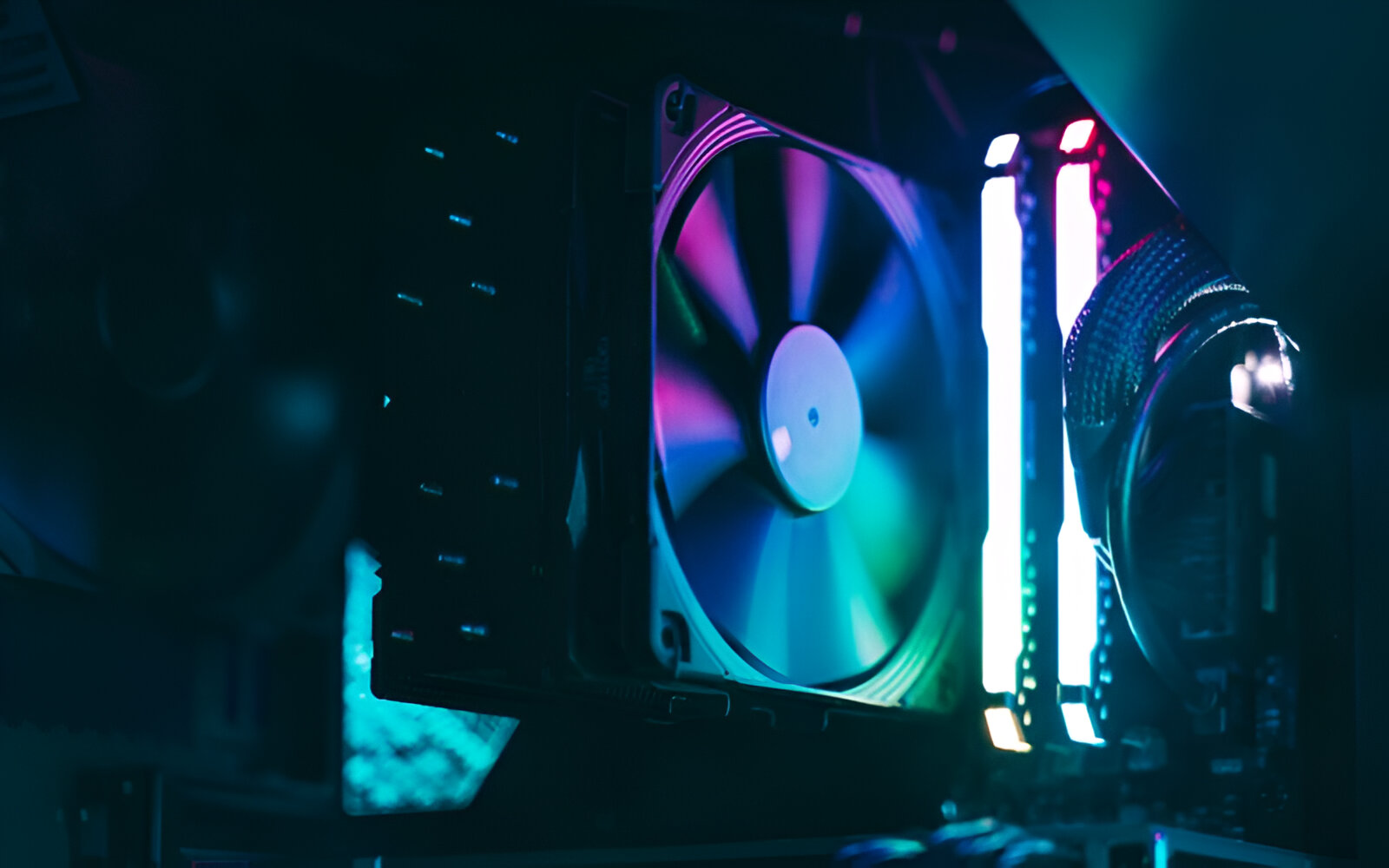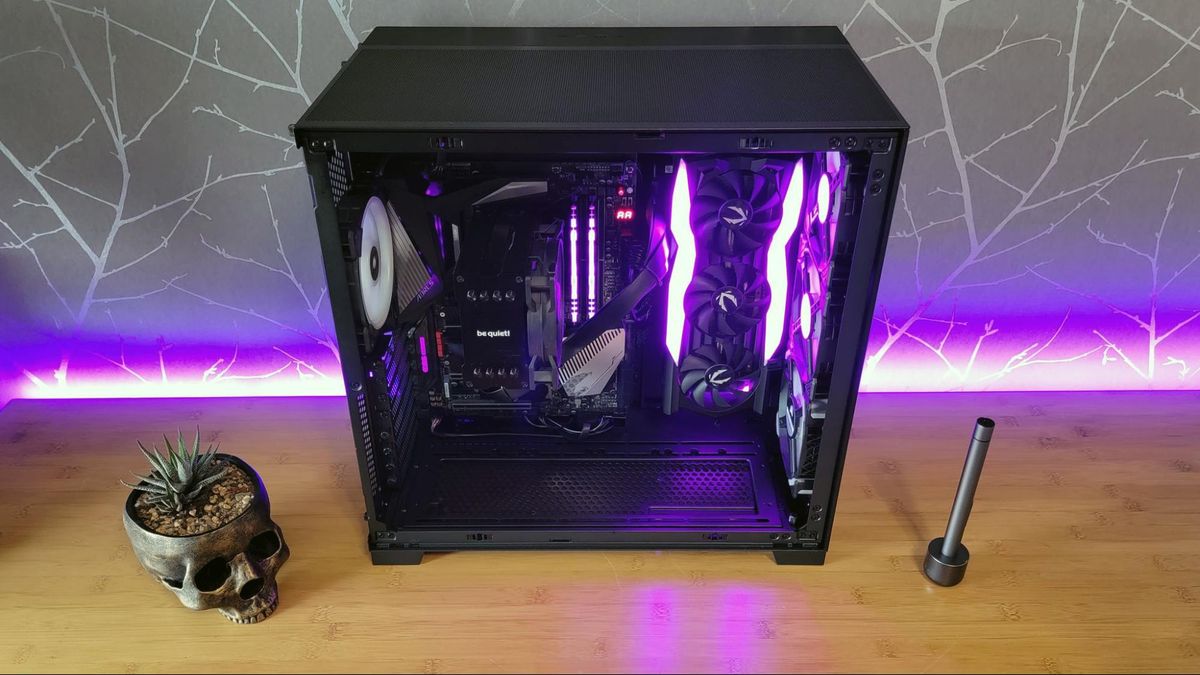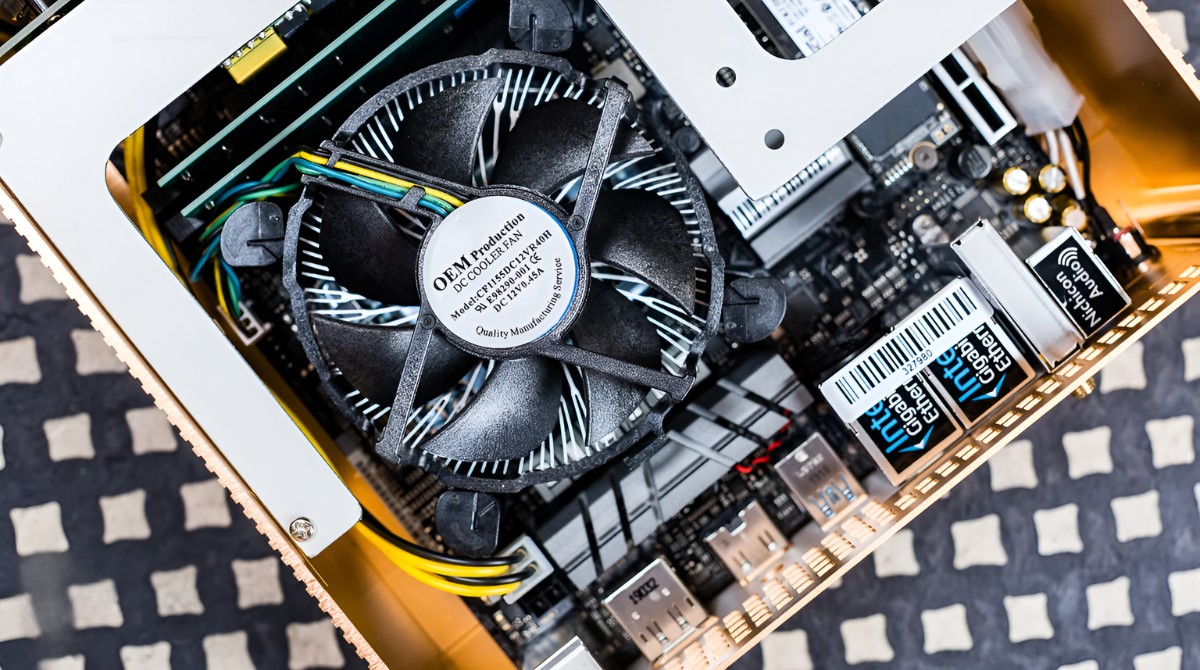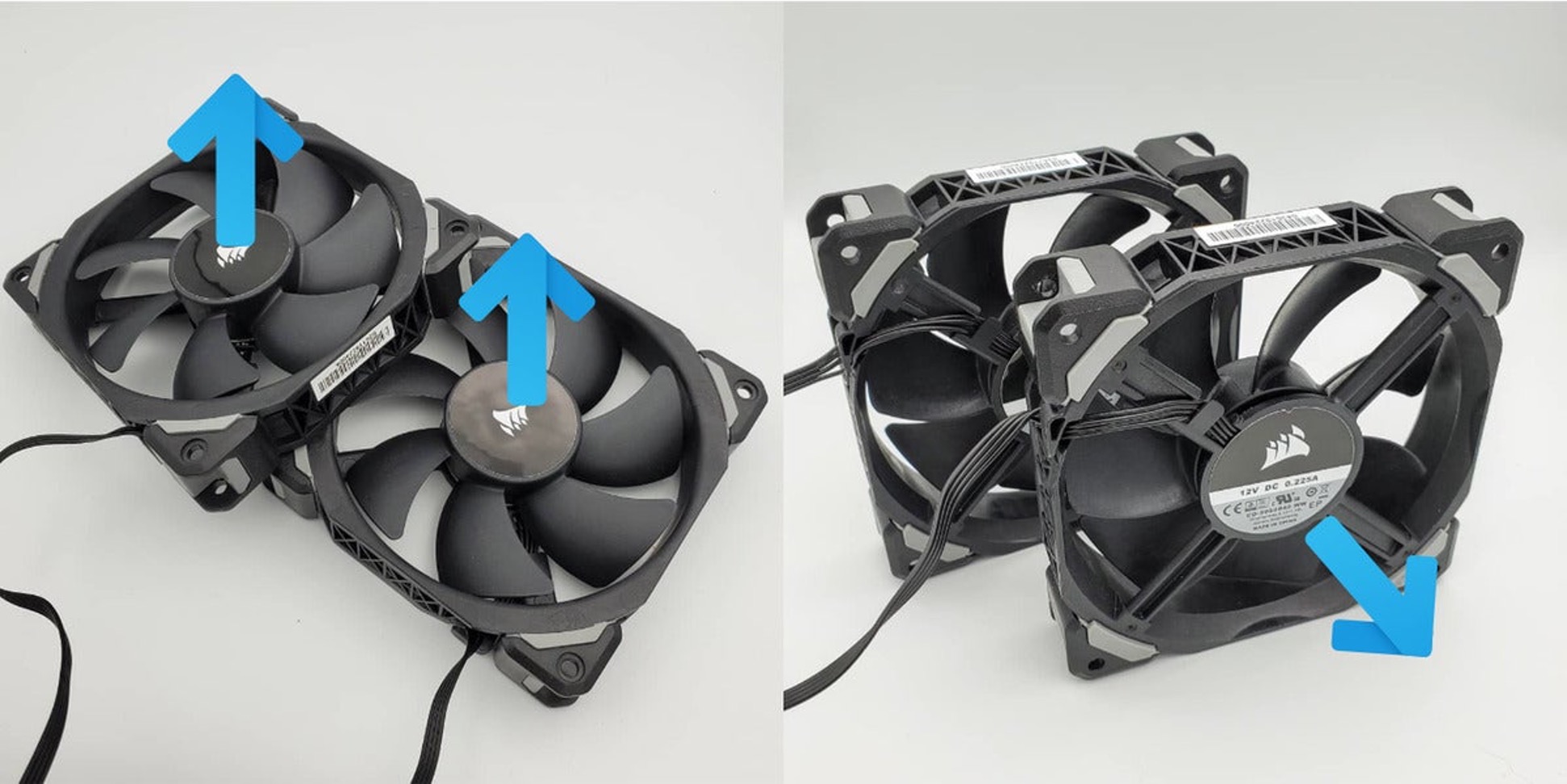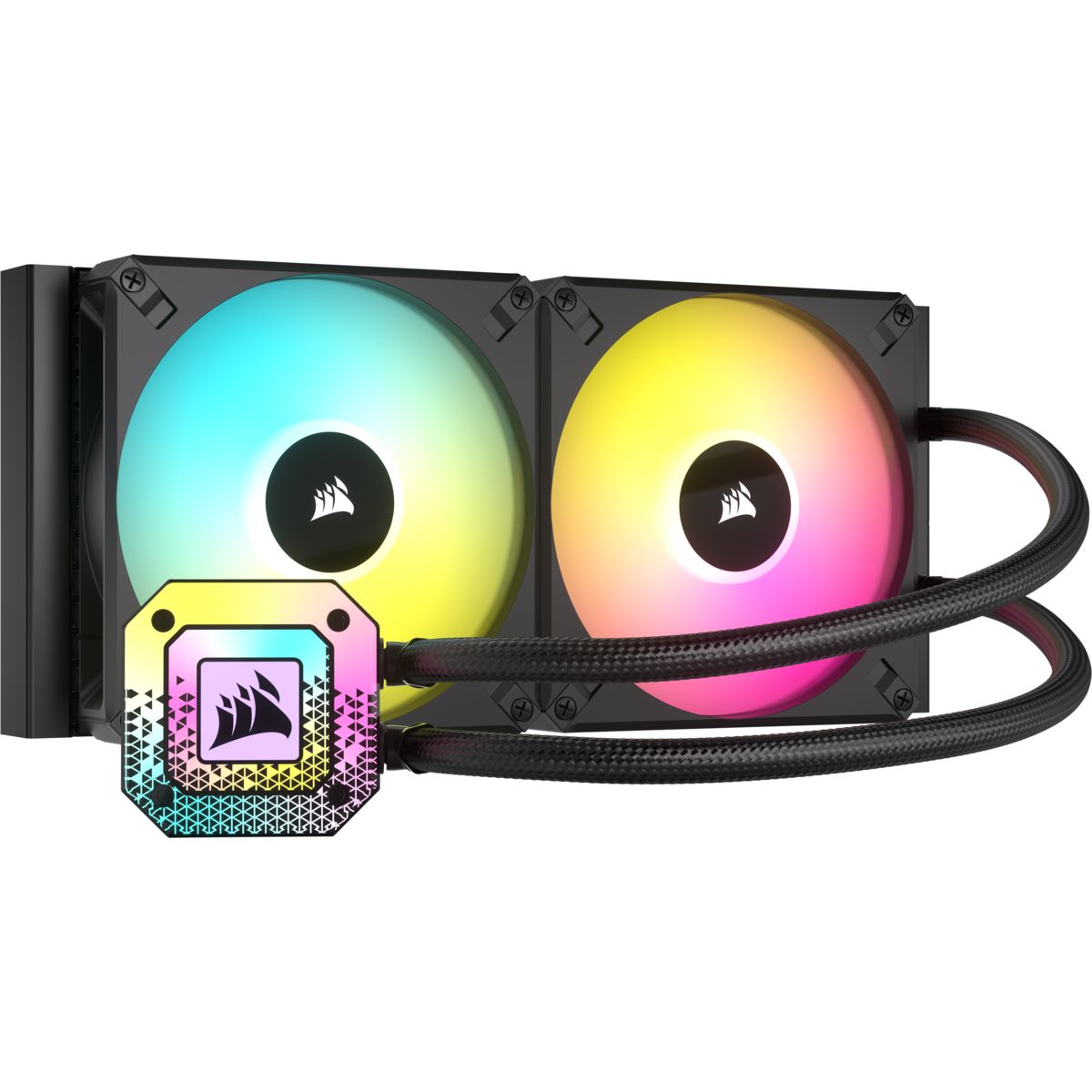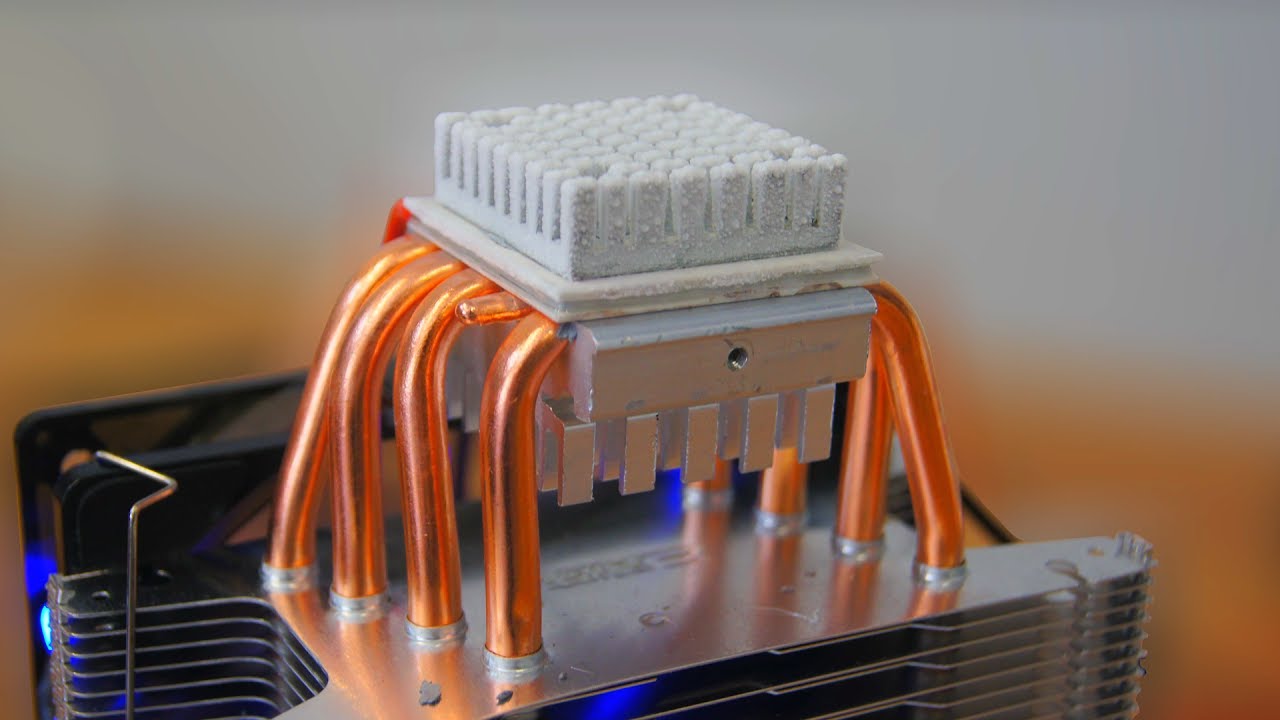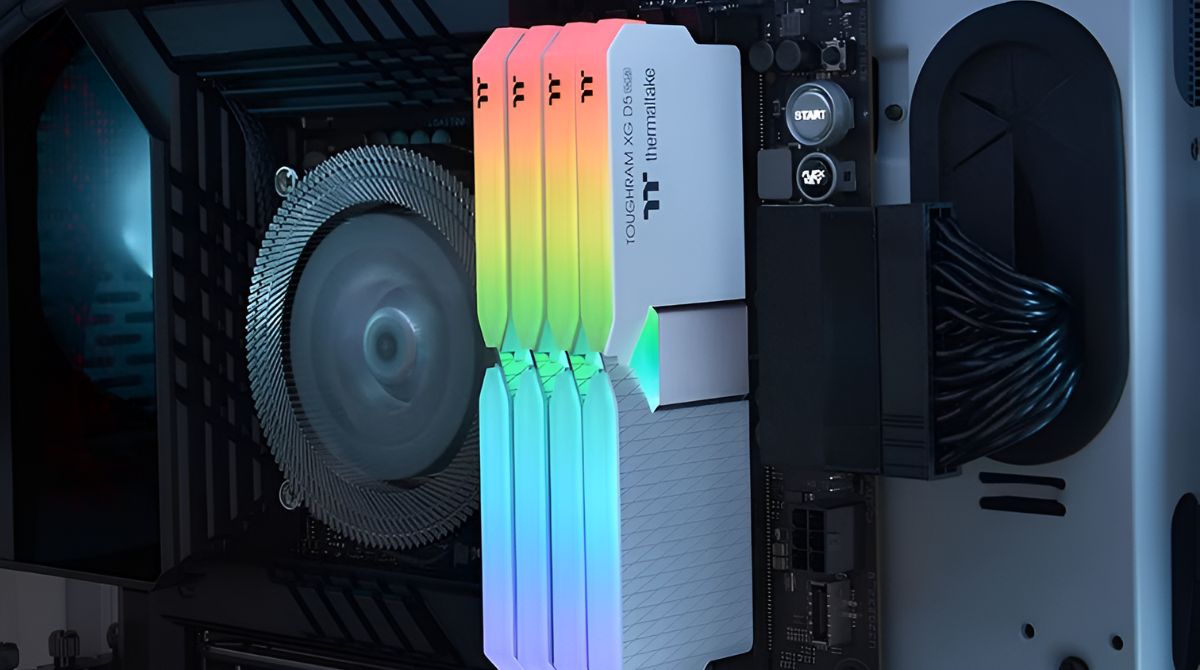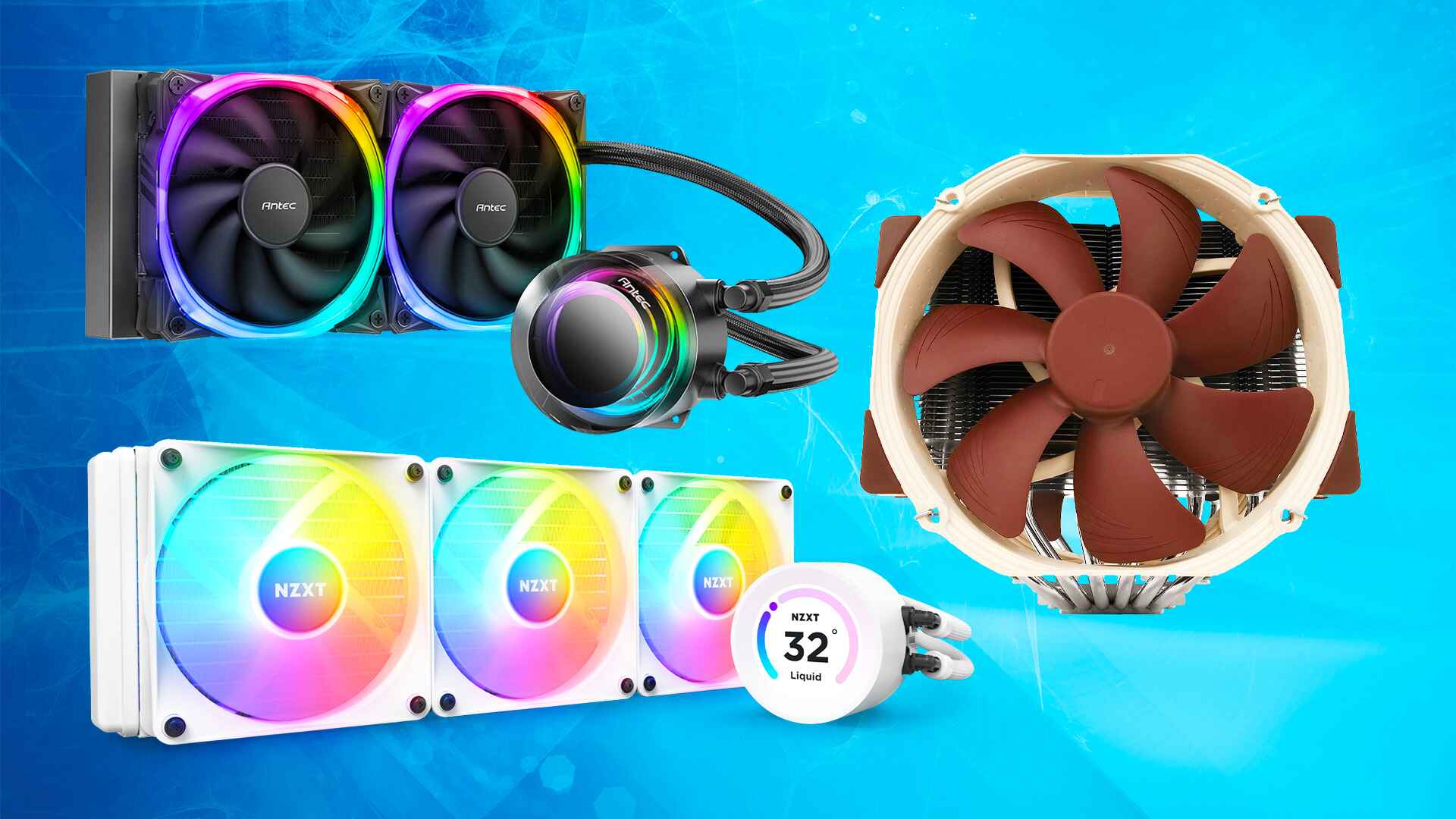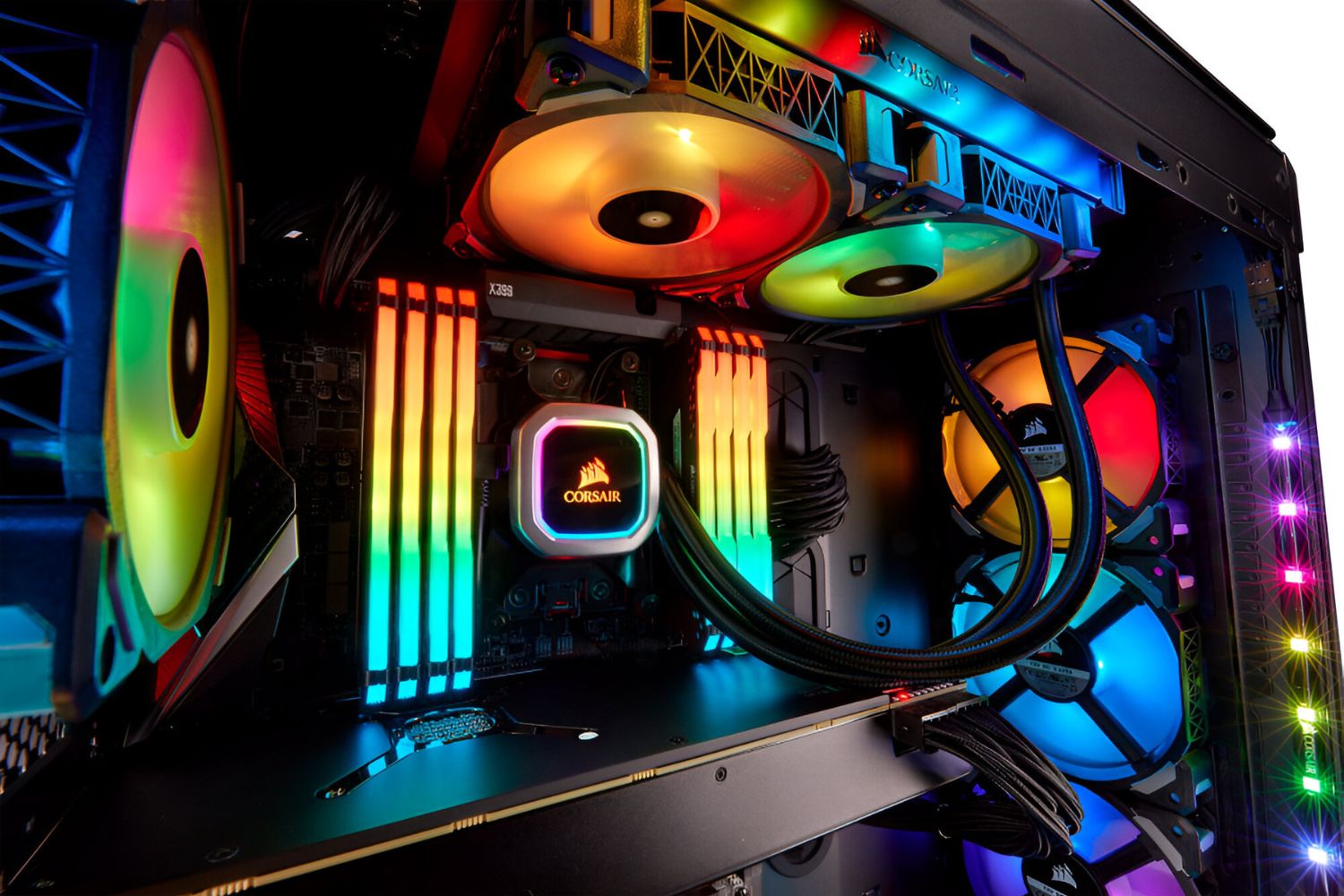Introduction
When it comes to building a high-performance computer, proper cooling is essential. The CPU (Central Processing Unit) is the brain of your system and generates a significant amount of heat while it’s running. To prevent overheating and potential damage to your CPU, it’s crucial to invest in an effective CPU cooler. But once you have your cooling solution, you may wonder which way the CPU cooler should face for optimal performance and efficiency.
The orientation of the CPU cooler can impact the airflow within your computer case and affect the overall temperature of your components. With incorrect placement, you risk insufficient cooling, increased noise, and potentially even shorter lifespan for your CPU. To ensure your system runs smoothly and reliably, it’s important to understand the factors that determine the ideal orientation for your CPU cooler.
In this article, we will explore the various aspects to consider when choosing the orientation of your CPU cooler. We’ll discuss the airflow direction, the importance of proper cooling, potential issues caused by incorrect placement, and the benefits of optimal CPU cooler placement. Additionally, we will provide step-by-step instructions on how to determine the correct orientation and install or adjust your CPU cooler accordingly.
Whether you’re an experienced computer builder or new to the world of hardware, this article will provide you with valuable insights to help you make an informed decision about the orientation of your CPU cooler. So let’s dive in and discover the best way to keep your system cool and functioning at its best!
Factors to Consider When Choosing the Orientation of CPU Cooler
Selecting the proper orientation for your CPU cooler is critical in achieving optimal cooling for your system. There are several factors you should take into account when making this decision, as it can significantly impact the overall performance and longevity of your computer. Let’s explore some essential factors to consider when choosing the orientation of your CPU cooler.
- Socket Compatibility: Different CPU sockets have varying orientations, which dictate how the cooler should be installed. It’s crucial to ensure that your chosen CPU cooler is compatible with your specific socket type.
- Case Design and Airflow: The layout and design of your computer case play a significant role in determining the optimal orientation of your CPU cooler. Consider the location of case fans, the presence of obstructions, and the overall airflow path within your case.
- Heat Sink Design: The design and orientation of the heat sink itself can influence the best configuration for your CPU cooler. Some heat sinks are designed specifically for vertical airflow, while others may function better with horizontal airflow.
- Graphics Card Clearance: If you have a powerful graphics card, it’s essential to consider its size and placement in relation to your CPU cooler. Ensure that the orientation of your CPU cooler does not obstruct the airflow or interfere with the optimal cooling of your graphics card.
- RAM and Motherboard Layout: Pay attention to the clearance between your CPU cooler and RAM modules or other components on your motherboard. A taller CPU cooler or improper orientation can impede access to RAM slots or interfere with other components.
- CPU Cooler Type: Different types of CPU coolers, such as air coolers and liquid coolers, have varying optimal orientations. It’s essential to understand the specific requirements and recommendations for your chosen CPU cooler type.
Considering these factors will help you make an informed decision when determining the optimal orientation for your CPU cooler. Taking the time to evaluate these aspects before installation will ensure that you achieve efficient heat dissipation and maintain an optimal operating temperature for your CPU.
Airflow Direction of CPU Cooler
Understanding the airflow direction of your CPU cooler is crucial for efficient heat dissipation and overall system cooling. The direction of airflow is determined by the design and orientation of the cooler, as well as the placement of fans. Let’s delve into the different airflow directions commonly seen in CPU coolers.
1. Downward airflow: In this configuration, the CPU cooler blows air downwards towards the motherboard. The cooler’s fan is positioned above the heatsink, allowing it to push the hot air down and out of the case. This is often the default orientation for many stock coolers and works well when the case has ample ventilation on the top or rear.
2. Upward airflow: In contrast to downward airflow, the CPU cooler blows air upwards, away from the motherboard. The fan is mounted beneath the heatsink, pulling cool air from the bottom and expelling it towards the top or rear of the case. This orientation is especially effective in cases with bottom-mounted fans or ventilation.
3. Front-to-back airflow: With this configuration, the CPU cooler blows air from the front of the case towards the back. The fan is positioned on one side of the heatsink, pushing air across the fins and out of the rear exhaust fan. This setup can facilitate efficient cooling when combined with case fans that ensure proper air circulation.
4. Side-to-side airflow: Some CPU coolers are designed to have air flowing horizontally from one side to the other. The fan is mounted on either side of the heatsink, pushing air across the fins and out of the case. This orientation is often used in compact cases where space is limited, or when there are side vents for improved airflow.
It is important to note that the best airflow direction for your CPU cooler depends on several factors, including the design of your case, the location of other components, and the direction of existing case fans. Experimenting with different orientations and monitoring temperatures can help you determine the most effective airflow configuration for your specific setup.
Next, we will discuss the importance of proper cooling for your CPU and the potential issues you may face if the orientation is incorrect.
Importance of Proper Cooling for CPU
Proper cooling is vitally important for the long-term health and performance of your CPU (Central Processing Unit). CPUs generate a significant amount of heat while executing complex operations, and inadequate cooling can lead to a host of issues that affect both short-term and long-term performance.
1. Temperature Regulation: CPUs have a maximum safe operating temperature, and if this threshold is exceeded, it can result in system instability, performance throttling, or even irreversible damage. Effective cooling ensures that the CPU remains within safe temperature limits, preventing potential heat-related issues.
2. Enhanced Performance: Heat is the enemy of performance. Elevated temperatures can cause the CPU to slow down, reducing its ability to handle demanding tasks. By keeping the CPU cool, you can ensure consistent and optimal performance across a wide range of computing tasks.
3. Extended Lifespan: Excessive heat can cause premature wear and tear on various CPU components, such as the silicon transistors. Over time, this can lead to permanent damage or a significantly reduced lifespan. Adequate cooling helps extend the longevity of your CPU, ensuring that it remains reliable and functional for years to come.
4. Overclocking Potential: Overclocking is the process of running a CPU at a higher frequency than its default specifications. This can significantly increase performance but also generates more heat. To safely overclock your CPU, effective cooling is essential to dissipate the increased heat generation and prevent thermal throttling or damage.
5. Stability and Consistency: A cool CPU is a stable CPU. The stability of the system relies on proper cooling to ensure that all components, including the CPU, operate within their designated temperature ranges. Stable temperatures promote consistent performance and minimize the likelihood of crashes, freeze-ups, or unexpected system shutdowns.
By investing in proper cooling for your CPU, whether through air coolers, liquid cooling, or other solutions, you can safeguard your system’s performance, protect your valuable hardware investment, and enjoy a more reliable computing experience.
Next, we will explore the potential issues you may encounter if your CPU cooler is not oriented correctly, highlighting the importance of choosing the right orientation for optimal cooling.
Potential Issues Faced with Incorrect Orientation
Choosing the incorrect orientation for your CPU cooler can lead to a range of issues that can impact the overall performance, cooling efficiency, and even the longevity of your system. Let’s explore some potential problems you may encounter with an improper cooler orientation.
1. Inadequate Cooling: The primary purpose of a CPU cooler is to dissipate heat effectively. If the cooler is not oriented properly, it may disrupt the airflow within the case, leading to insufficient heat dissipation. This can result in higher CPU temperatures, increased fan speeds, and potentially unstable system operation.
2. Increased Noise Levels: When a CPU cooler is not correctly oriented, it may lead to increased fan noise. If the cooler is struggling to effectively cool the CPU, the fans may need to run at higher speeds to compensate. This can create unnecessary noise, making your system louder and potentially disrupting your workflow or gaming experience.
3. Poor Performance: Higher temperatures caused by an incorrectly oriented cooler can lead to decreased overall system performance. The CPU may throttle its speed, reducing its processing power to prevent overheating. As a result, you may experience slower application loading times, decreased multitasking capabilities, and decreased performance in CPU-intensive tasks.
4. Reduced Component Lifespan: Excessive heat due to ineffective cooling can reduce the lifespan of not just your CPU but also other components in your system. Higher temperatures can degrade the performance and reliability of components such as the motherboard, RAM, and graphics card. Over time, this can lead to component failure and the need for costly repairs or replacements.
5. Potential System Instability: In extreme cases, an incorrectly oriented CPU cooler can cause system instability. If the CPU temperatures reach critical levels, the system may experience sudden crashes, freezes, or unexpected shutdowns. This can result in data loss, interruption of important tasks, and frustration.
By ensuring the correct orientation of your CPU cooler, you can mitigate these potential issues and maintain optimal performance, cooling efficiency, and system stability. In the next section, we will discuss the benefits of placing your CPU cooler in the right position and orientation.
Benefits of Optimal CPU Cooler Placement
Proper placement and orientation of your CPU cooler offer several benefits that contribute to the overall performance, cooling efficiency, and longevity of your system. Let’s explore some of the advantages you can expect from optimal CPU cooler placement.
1. Efficient Heat Dissipation: The primary benefit of optimal CPU cooler placement is the efficient dissipation of heat generated by the CPU. When the cooler is properly oriented, it ensures that the airflow is directed towards the heat sink and quickly carries away the heat. This leads to lower CPU temperatures, preventing performance throttling and potential damage to the CPU.
2. Improved System Stability: By maintaining optimal CPU temperatures, proper cooling placement helps promote system stability. Cooler CPUs are less likely to experience thermal throttling, random shutdowns, or system crashes. This ensures uninterrupted usage of your computer, especially during demanding tasks or extensive gaming sessions.
3. Longevity of Components: Efficient cooling due to optimal CPU cooler placement extends the lifespan of not just the CPU but also other components in your system. Cooler temperatures help mitigate the wear and tear caused by heat, reducing the risk of premature failure or performance degradation. This results in a more reliable and durable computer system.
4. Quieter System: When the CPU cooler is correctly oriented, it functions more effectively, allowing the fans to operate at lower speeds while still providing sufficient cooling. As a result, the system generates less noise, creating a more peaceful and comfortable computing environment.
5. Better Overclocking Potential: Optimal CPU cooler placement plays a crucial role in supporting overclocking endeavors. When the CPU is kept cool, there is more headroom for increasing its clock speed and voltage without exceeding safe temperature thresholds. This enables enthusiasts and gamers to extract additional performance from their CPUs and enjoy higher processing power.
6. Enhanced Overall Performance: By maintaining lower CPU temperatures through optimal cooling placement, you can expect improved overall system performance. The CPU can operate at its full potential, delivering better responsiveness, faster multitasking capabilities, and smoother execution of resource-intensive tasks.
Optimal CPU cooler placement is essential to harnessing these benefits and ensuring the longevity and peak performance of your system. In the next section, we will discuss how to determine the correct orientation for your CPU cooler and the steps to install or adjust it accordingly.
How to Determine the Correct Orientation for CPU Cooler
Determining the correct orientation for your CPU cooler is essential to maximize cooling efficiency and ensure optimal performance. While specific recommendations may vary depending on your CPU cooler model and case design, there are general guidelines to help you determine the ideal orientation.
1. Refer to the CPU Cooler Manufacturer: The first step in determining the correct orientation is to consult the documentation provided by the CPU cooler manufacturer. They often provide recommendations and guidelines on how to position the cooler for optimal performance. The instructions may include diagrams or illustrations to assist you.
2. Consider the Airflow Direction: Assessing the airflow direction of your case is crucial in determining the appropriate orientation. You want the CPU cooler fan to direct the airflow toward a case exhaust fan or a ventilation area to effectively expel the hot air. Analyze the existing airflow pattern in your case and align the cooler’s orientation accordingly.
3. Account for Other Cooling Components: Take into account the orientation and location of other cooling components in your system, such as case fans or graphics card coolers. Ensure that the CPU cooler’s orientation doesn’t obstruct the airflow of these components or create a clash in the airflow path.
4. Evaluate the System’s Thermal Design: Consider your computer case’s thermal design and layout. Look for potential obstructions or heat sources that may affect the CPU cooler’s performance. Make sure that the cooler is positioned in a way that allows for sufficient airflow and eliminates any potential hotspots.
5. Clearance for Memory and Other Components: Pay attention to the clearance between the CPU cooler and other components on your motherboard, particularly the RAM modules. Ensure that the cooler’s dimensions and orientation do not interfere with the installation or movement of these components. This is especially crucial if you have tall RAM heatsinks or other components that may impede the cooler’s placement.
6. Experiment and Monitor Temperatures: If you’re still uncertain about the ideal orientation, you can experiment with different configurations and monitor CPU temperatures using software monitoring utilities. Run stress tests or engage in activities that typically put a heavy load on your CPU to observe how different orientations affect temperature levels. Adjust accordingly until you find the optimal configuration.
By considering these factors, consulting the manufacturer’s recommendations, and monitoring temperatures, you can determine the correct orientation for your CPU cooler. In the next section, we will provide step-by-step instructions for installing or adjusting the CPU cooler orientation.
Steps to Install and Adjust CPU Cooler Orientation
Installing or adjusting the orientation of your CPU cooler may seem daunting, but it can be easily accomplished by following these step-by-step instructions. Note that the specific steps may vary depending on your cooler model and case design, so it’s important to refer to the manufacturer’s instructions for your specific hardware.
- Gather Your Tools: Ensure you have the necessary tools, such as a screwdriver, thermal paste, and any other components provided with your CPU cooler.
- Prepare the Case: Turn off your computer and unplug it. Open the computer case and carefully remove the side panel for easy access.
- Remove Existing Cooler (If Applicable): If you’re replacing an existing CPU cooler, carefully detach it from the CPU socket by loosening or unscrewing the retention mechanism. Gently wiggle the cooler to break the thermal paste seal and lift it off the CPU.
- Clean and Apply Thermal Paste (If Applicable): Clean off any residual thermal paste from the CPU using isopropyl alcohol and a lint-free cloth. Apply a small amount of new thermal paste (about the size of a pea) onto the center of the CPU’s heat spreader. Spread it evenly using a plastic card or a clean finger (while wearing gloves).
- Prepare the CPU Cooler: If your CPU cooler requires assembly, follow the manufacturer’s instructions to attach any brackets, backplates, or mounting hardware.
- Install the CPU Cooler: Carefully position the CPU cooler on top of the CPU, aligning the mounting holes on the cooler with the corresponding holes or brackets on the motherboard. Gently apply pressure to ensure proper contact between the cooler’s base and the CPU’s heat spreader.
- Secure the CPU Cooler: Use the provided screws or mounting mechanism to secure the CPU cooler in place. Tighten the screws diagonally in a cross pattern to ensure even pressure distribution. Be careful not to overtighten, as it may damage the motherboard or CPU.
- Connect the Fan: If your CPU cooler has an integrated fan, locate the fan header on the motherboard and connect the fan’s power cable to it. Make sure it is securely attached.
- Adjust the Orientation (If Needed): If you need to change the orientation of the CPU cooler, carefully remove it and follow the manufacturer’s instructions on adjusting the cooler’s orientation or fan placement. Reinstall the cooler following the steps mentioned earlier.
- Close the Case: Once the CPU cooler is securely installed and oriented correctly, replace the side panel of the computer case and ensure it is properly fastened.
- Power On and Monitor: Plug in your computer, power it on, and monitor the CPU temperatures using software monitoring utilities. Ensure that the CPU temperatures remain within safe limits for optimal performance.
By carefully following these steps, you can install or adjust the orientation of your CPU cooler to ensure proper airflow and efficient heat dissipation for your CPU. Remember to refer to the specific instructions provided by the manufacturer for your particular CPU cooler.
Common Debates and Misconceptions
When it comes to CPU cooler orientation, there are several debates and misconceptions that surround this topic. Let’s address some of the common debates and clear up any misconceptions to help you make more informed decisions for your system.
1. Push vs. Pull Configuration: One debate revolves around whether it’s better to have the CPU cooler fans in a push configuration (pushing air through the heatsink) or a pull configuration (pulling air through the heatsink). The truth is that both configurations can be effective, and the choice depends on factors such as case airflow and personal preference. It’s more important to ensure that there is proper airflow in and out of the heatsink, regardless of the configuration chosen.
2. Air Cooler vs. Liquid Cooler: Another common debate is whether air coolers or liquid coolers are better for CPU cooling. The reality is that both can be effective, with air coolers typically offering a more budget-friendly option and liquid coolers providing better cooling performance in certain scenarios. The decision ultimately depends on your specific needs, budget, and case compatibility.
3. Tower Cooler Orientation: Tower-style CPU coolers often raise questions about the orientation of the heatsink and fan. Some may argue that having a vertical orientation with the fan at the front or back of the case is better, while others suggest a horizontal orientation with the fan facing upwards or downwards. The key consideration should be aligning the orientation that optimizes airflow within your case and ensures proper cooling of the CPU.
4. Optimal Fan Placement: There is debate about whether it’s better to have the CPU cooler fan as an intake or exhaust. While exhaust orientation is more common, the optimal configuration depends on the overall case airflow and cooling strategy. It’s crucial to maintain a balance between intake and exhaust fans to ensure proper air circulation and cooling efficiency.
5. Myth of “Upside-Down” Power Supply: Some misconceptions have arisen around the orientation of the power supply unit (PSU) affecting CPU cooler performance. It is often believed that having the PSU installed in an “upside-down” orientation can negatively impact cooling. The truth is that modern cases have separate compartments for the PSU and CPU, eliminating any significant impact on CPU cooling, regardless of PSU orientation.
It’s important to consider these debates and misconceptions within the context of your specific hardware, case design, and cooling requirements. Ultimately, what matters most is finding an orientation and cooling solution that provides optimal airflow, effective heat dissipation, and stable temperatures for your CPU.
In the next section, we will answer some frequently asked questions related to CPU cooler orientation to provide further clarity on this topic.
Frequently Asked Questions
Here are some frequently asked questions related to CPU cooler orientation:
Q1: Does CPU cooler orientation affect performance?
Yes, CPU cooler orientation can have a significant impact on performance. Proper orientation ensures efficient heat dissipation, prevents thermal throttling, and allows the CPU to operate at optimal speeds.
Q2: Can I use any CPU cooler orientation with any case?
While most CPU coolers are designed to fit standard case configurations, it’s essential to ensure compatibility. Check your case’s specifications and the CPU cooler’s documentation to confirm that they are compatible and can accommodate the desired orientation.
Q3: Is water cooling more effective than air cooling?
Water cooling can offer better cooling performance in certain scenarios, especially for high-performance systems or overclocking. However, air cooling is still highly effective and often more affordable for most users.
Q4: Can I adjust the CPU cooler orientation after installation?
Yes, you can adjust the CPU cooler orientation after installation. However, it is recommended to carefully follow the manufacturer’s instructions and make any adjustments while the system is powered off to avoid any potential damage.
Q5: Should I prioritize CPU cooler orientation over other case fans?
All components within your system, including case fans and CPU cooler, play a role in maintaining proper airflow. It’s important to have a balanced cooling setup that includes adequate case fans and appropriate CPU cooler orientation to ensure efficient heat dissipation throughout the system.
Q6: Can I use aftermarket CPU coolers with any motherboard?
Aftermarket CPU coolers come in various sizes and socket compatibility. Ensure that the CPU cooler you choose is compatible with your specific motherboard’s socket type to avoid any compatibility issues.
Q7: Does CPU cooler orientation affect RAM clearance?
Yes, CPU cooler orientation can impact RAM clearance. Some CPU coolers might obstruct access to RAM slots or interfere with taller RAM modules. Consider the dimensions and orientation of your CPU cooler to ensure compatibility with your RAM configuration.
Remember to consult the manufacturer’s instructions and specifications for your specific hardware to ensure the correct orientation and compatibility.
If you have any additional questions or concerns, consult with professionals or reach out to the manufacturer’s support team for further assistance.
Conclusion
Choosing the correct orientation for your CPU cooler is crucial for maintaining optimal cooling efficiency, system stability, and overall performance. By considering factors such as socket compatibility, case design, airflow direction, and component clearance, you can ensure that your CPU cooler is properly oriented for efficient heat dissipation.
Installing or adjusting the orientation of your CPU cooler may seem challenging, but with careful consideration and following the manufacturer’s instructions, you can achieve the desired configuration. Remember to monitor CPU temperatures after installation and make adjustments if necessary to optimize cooling performance.
Proper CPU cooling offers numerous benefits, including better performance, extended component lifespan, increased system stability, quieter operation, and enhanced overclocking potential. It is important to debunk common debates and misconceptions to make informed decisions about your CPU cooler orientation and cooling strategies.
When in doubt, consult the CPU cooler manufacturer’s recommendations and seek guidance from professionals or online communities. Every system is unique, and finding the optimal orientation may require some experimentation and monitoring of temperatures.
By understanding the importance of CPU cooler orientation and following the steps outlined in this article, you can ensure that your CPU operates at safe temperatures, performs optimally, and remains reliable for the long term.
Remember, your CPU’s well-being depends on proper cooling, so take the time to assess and optimize the orientation of your CPU cooler to get the most out of your system.







